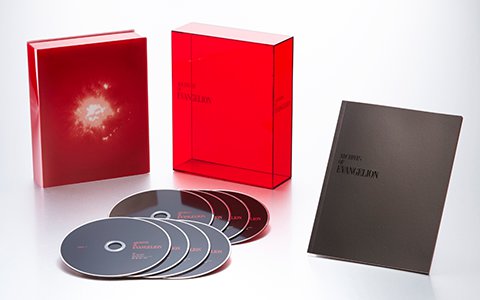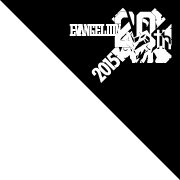The Height of Difficulty -
Collating the Film.
Do you know the word “telecine”? Telecine is the system by which you convert analogue film to digital data you can use for TV broadcasts or DVDs. Since the late ‘90s, the production of many Japanese animation projects has shifted from hand-drawn cels to digital, however, the masters for movies made before then and even some now are still on physical film stock. In other words, when you’re releasing high quality video versions of older anime and movies shot on film, you’re going to use this specialist telecine technology.
Yukita:“Cel animation like the original Evangelion TV series was recorded on 35mm or 16mm film. Incidentally, the OP and ED are 35mm while the main feature is 16mm. When making the video, first we have to run the film through the telecine and perform color correction with a specialist colorist. After that is the restoration process including finely removing dirt from the frame and correcting errors which become visible in the higher picture quality version before carrying out the authoring process to create the final video package. Authoring includes things like adding subtitles and creating menus and making them work with a remote control.”
Fujimori:“When you say ‘video editing’ it sounds so simple, but the processes involved change according to the product. For example, if there is damage or dirt which stands out on the film, in most cases we can fix that by hand. However, with older cel animation, the fine details of the color paint may be different or you often find tiny mistakes in the picture. With these sorts of problems, whether or not you should fix the image isn’t just up to the distributor who will be selling the video, you need to discuss it with the anime’s original creative team. Just sorting that out takes time and money.”
Yukita:“Even so in the case that the original is from negative film, it’s rare that we’d actually correct it. Of course, if they want us to fix it then we will, but in most cases we let small mistakes go. These small errors are also part of the work that was finished and released. There are people who think it’s OK to leave the original movie as it is.”
For example, this Evangelion box set is exactly the same as the first version broadcast on TV screens in 1995. The versions of the TV series that have been on sale so far from the ancient LaserDisc right up to the DVD have had numerous corrections made to the images. However, this new DVD is exactly the same as it was at the time of the TV broadcast even down to the on-screen sponsor credits without adding any correction to reduce noise caused by the deterioration of the original film stock from before the retake. In other words, it’s almost like a time capsule where you can experience the same video from the original broadcast once again with a fresh, lively feeling.
Yukita:“It might sound so simple like that, but the truth is it was surprisingly hard going. For the TV series and also the movies too, there have already been so many video versions created. As so many different versions have been made, there are huge numbers of materials in existence. First of all we went to look for materials from King Records or from the warehouse of the original broadcast network, TV Tokyo, but as there were so many and they were so old, we already had to check which were the original 1995 broadcast masters (laughs). There were so many materials that we just couldn’t figure out even when we tried to actually watch them, collecting and collating the materials took up a fair amount of time.”
Fujimori:“Because we had some members of staff who still had tapes they’d recorded the original 1995 TV broadcast on, we could solve the problem. When we couldn’t tell even by watching the materials, we verified them by comparing them with the tapes. Finally, ‘Ah, something’s not right!’ a staff member would say, so we’d know these weren’t the right materials. (laughs). There were a particularly high number of incorrect versions when we were working on episodes 25 and 26.”

The “Neon Genesis Evangelion DVD Box: Archives of Evangelion” box set collects all 26 episodes of the* Neon Genesis Evangelion* TV anime which was broadcast on TV Tokyo from 1995–1996. The TV broadcast edition of Neon Genesis Evangelion: Death & Rebirth is also included as well as the Evangelion: Death (True) edit which is available here for the first time. As a bonus video feature, the special programs created for the 1997 reruns are also included. The set really does pack in the feeling of being hit by a blast from the cathode ray TVs of the past. One more thing, the same as the Blu-ray set, the DVDs also support “barrier-free” subtitles (with some exceptions) for the dialogue and music in the main video. DVD (8 discs, 18,000 yen plus tax) released on Aug. 26, 2015 by King Records.

